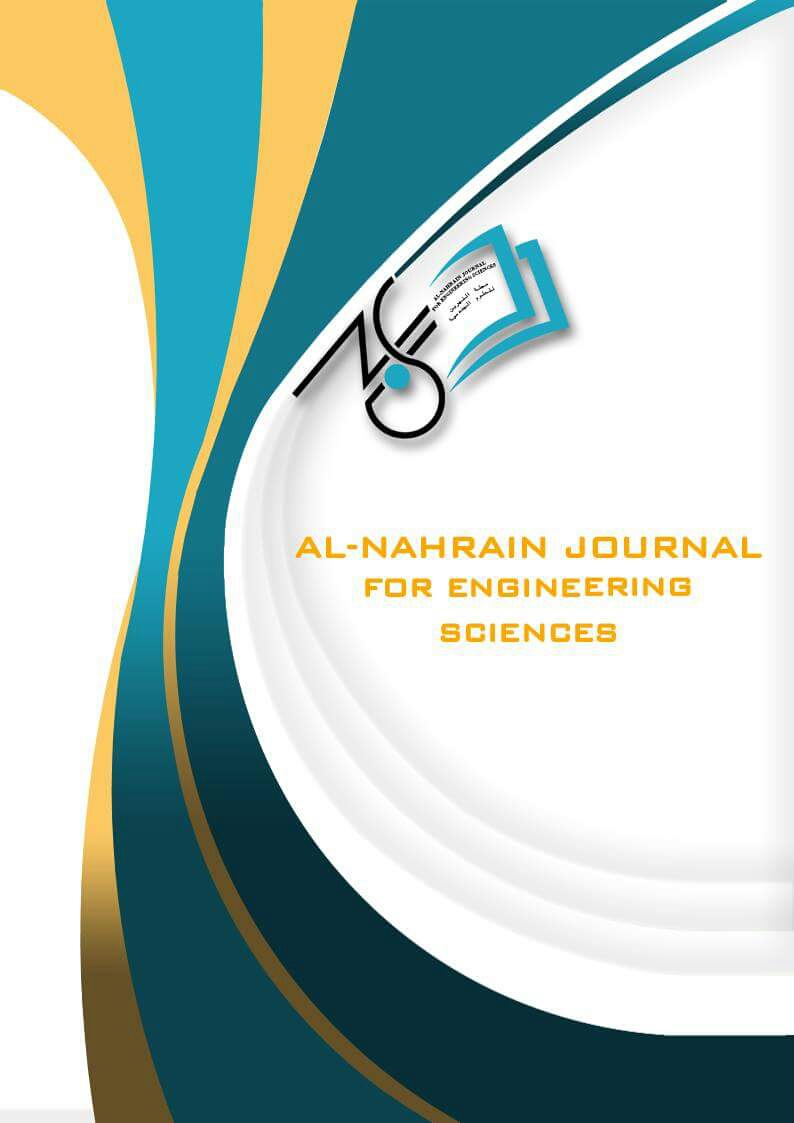Manufacturing and Testing Pneumatic Pads Adjustable Socket for A Below-Knee Prosthetic
DOI:
https://doi.org/10.29194/NJES.27020164Keywords:
Adjustable Socket, Below-Knee Amputation, Pneumatic -Pads, ProsthesisAbstract
The purpose of this research is to manufacture and test adjustable sockets for below-knee amputation. This article studies using the pnuematic–pads for adjustable sockets. The manufacturing of an adjustable socket with pneumatic pads goes through several stages: In the theoretical design of the adjustable socket, the suggested materials were studied for the pneumatic pads, tubes, and pneumatic pump which should be suitable for the suggested application. In the experimental work, using composite materials for manufacturing the socket consisting of perlon and resin to achieve the rigid shape and required flexibility for the prosthetic user with the pneumatic pads. After assembling the adjustable socket parts, the pneumatic pads, the pump and the tubes, the socket were tested for several times on the patient. In the last stage, the pressure between the socket and the residual limb was measured using F-socket, and it was found that the results were: anterior (160kPa), lateral (167kPa), posterior (153kPa) and medial (348kPa). By comparing these results with what was previously studied, the pressure between the socket and the residual limb is within the acceptable range. The design provides good suspension and more adaptability to the change in stump volume. A posative feedback was given by the patient who used the prosthetic patient for several days as a trial to measure its safety and comfortablty.
Downloads
References
Paloušek, David, et al. "Experimental recognition of loading character of transtibial prosthesis." Engineering Mechanics 15.5 (2008): 355-364.
Fergason, John, and Douglas G. Smith. "Socket considerations for the patient with a transtibial amputation." Clinical Orthopaedics and Related Research® 361 (1999): 76-84.
G. Pirouzi, N. A. A. Osman, A. A. Oshkour, S. Ali, H. Gholizadeh, and W. A. B. W. Abas, “Development of an Air Pneumatic Suspension System for Transtibial Prostheses,” Sensors, vol. 14, no. 9, pp. 16754–16765, Sep. 2014, doi: 10.3390/s140916754.
Bache, Andrew, et al. "Adjustable socket system." U.S. Patent No. 10,940,028. 9 Mar. 2021.
T. R. Dillingham, J. Kenia, F. S. Shofer, and J. Marschalek, “A Prospective Assessment of an Adjustable, Immediate Fit, Transtibial Prosthesis,” Pm&R, vol. 11, no. 11, pp. 1210–1217, Apr. 2019, doi: 10.1002/pmrj.12133.
S. I. Aguila, G. E. A. Sánchez, E. E. Sauvain, B. Alemon, R. Q. Fuentes-Aguilar, and J. C. Huegel, “Interface Pressure System to Compare the Functional Performance of Prosthetic Sockets during the Gait in People with Trans-Tibial Amputation,” Sensors, vol. 20, no. 24, p. 7043, Dec. 2020, doi: 10.3390/s20247043.
F. M. Mbithi, A. J. Chipperfield, J. Steer, and A. S. Dickinson, “Developing a control framework for self-adjusting prosthetic sockets incorporating tissue injury risk estimation and generalized predictive control,” Biomedical Engineering Letters, Dec. 2021, doi: 10.1007/s13534-021-00211-x.
N. Hamzah, N. A. A. Razak, M. Z. A. Karim, and S. F. Salleh, “Volume Fluctuations in Active and Nonactive Transtibial Prosthetics Users,” BioMed Research International, vol. 2022, pp. 1–9, Sep. 2022, doi: 10.1155/2022/2669484.
Sanders JE, Garbini JL, McLean JB, Hinrichs P, Predmore TJ, Brzostowski JT, Redd CB, Cagle JC. A motor-driven adjustable prosthetic socket operated using a mobile phone app: a technical note. Medical Engineering & Physics. 2019 Jun 1; 68:94-100 https://doi.org/10.1016/j.medengphy.2019.04.003.
Vamos AC, Gurrey CJ, Cagle JC, Brzostowski JT, McLean JB, Sanders JE. An algorithm to calculate socket volume changes of adjustable sockets for transtibial prosthesis users. JPO: Journal of Prosthetics and Orthotics. 2020 Jan 1;32(1):65-70, DOI: 10.1097/JPO.0000000000000278.
McLean JB, Redd CB, Larsen BG, Garbini JL, Brzostowski JT, Hafner BJ, Sanders JE. Socket size adjustments in people with transtibial amputation: Effects on residual limb fluid volume and limb-socket distance. Clinical Biomechanics. 2019 Mar 1;63:161-71.
Weathersby EJ, Vamos AC, Larsen BG, McLean JB, Carter RV, Allyn KJ, Ballesteros D, Wang H, deGrasse NS, Friedly JL, Hafner BJ. Performance of an auto-adjusting prosthetic socket during walking with intermittent socket release. Journal of Rehabilitation and Assistive Technologies Engineering. 2022 Apr 9;9:20556683221093271.
Wang MH, Nong QJ, Qian Y, Huang YH, Wang YH, Yu HL. Design of Adjustable Frame-Type Prosthetic Socket for Lower Limb. IRBM. 2023 Feb1;44(1):100731, https://doi.org/10.1016/j.irbm.2022.07.002.
Klenow T, Schulz J. Adjustable-volume prosthetic sockets: market overview and value propositions. Canadian Prosthetics & Orthotics Journal. 2021 Sep21;4(2), https://doi.org/10.33137%2Fcpoj.v4i2.35208.
Ballit, Abbass. Design and manufacturing process optimization for prosthesis of the lower limb. Diss. Université de Technologie de Compiègne, 2020.
Kubba, Ammar I., and Saif M. Abbas. "Numerical Analysis and Mechanical Properties for Below Knee Prosthetic Socket." Solid State Technology 63.3 (2020): 3545-3557.
Downloads
Published
Issue
Section
License
Copyright (c) 2024 Ammar Issam Salih Kubba, Ahmed A. Alammar

This work is licensed under a Creative Commons Attribution-NonCommercial 4.0 International License.
The authors retain the copyright of their manuscript by submitting the work to this journal, and all open access articles are distributed under the terms of the Creative Commons Attribution-NonCommercial 4.0 International (CC-BY-NC 4.0), which permits use for any non-commercial purpose, distribution, and reproduction in any medium, provided that the original work is properly cited.













